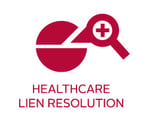 Question: ABC Company Supermarkets furnished health coverage to my client, an ABC Company employee, was injured in a Motor Vehicle Accident. ABC Company is claiming to be self-funded and has asserted a lien against my client's settlement proceeds for 100%. Form 5500 line 9a (plan funding arrangement) is marked insurance and general assets of the sponsor. Schedule A line 7 is marked health, HMO and prescription drug, line 8 is marked nothing. Line 9 shows $1,396,016 for (a) Total Premiums or subscription charges paid to carrier and (b) is marked N/A. Does this indicate ABC Company is partially self funded, and if so will state law apply (Florida) to reduce the lien to less than 100%?
Question: ABC Company Supermarkets furnished health coverage to my client, an ABC Company employee, was injured in a Motor Vehicle Accident. ABC Company is claiming to be self-funded and has asserted a lien against my client's settlement proceeds for 100%. Form 5500 line 9a (plan funding arrangement) is marked insurance and general assets of the sponsor. Schedule A line 7 is marked health, HMO and prescription drug, line 8 is marked nothing. Line 9 shows $1,396,016 for (a) Total Premiums or subscription charges paid to carrier and (b) is marked N/A. Does this indicate ABC Company is partially self funded, and if so will state law apply (Florida) to reduce the lien to less than 100%?
Answer: Thank you for the question. Before getting to the Form 5500 question I want to touch upon the plan language of the ABC Company Plan. All SPDs should contain basic information about the plan including funding status. While not always conclusive (or accurate) it is the best place to start. Assuming the SPD states the plan is self-funded the next place to go is the Form 5500 and the question you pose below.
As line 9a indicates both insurance and general assets we can conclude that welfare plan as a whole has some aspects which are self-funded and others which are insured. This may mean that some benefits such as dental, vision, and life insurance are provided through insurance agreements while the medical portion is provided through employer assets. It may also mean that some employees receive medical coverage through insurance while others receive self-funded medicals (largely due to geographical issues). The next step is to examine the Schedule A(s) which you have correctly done.
For each insurance arrangement under the Plan there will be a Schedule A. Under the circumstances of your question it would appear that some medical (health) benefits are provided through insurance. One scenario could be that a portion of employees receive insured health benefits. Compare the number of plan participants on the main form (line 6) with the number of people covered under the HMO on the Schedule A (line 1(e)). If a large number of participants are represented by the Schedule A(s) you may have a good argument that the plan is insured. Another scenario could be the use of a stop loss policy.
If the Plan benefits provided were both partially funded and partially insured we are dealing with a "stop-loss" coverage situation. These situations arise when an employer or Plan purchases insurance coverage intended to reimburse it for higher or catastrophic losses. In the case of a higher loss, a self-funded Plan would pay the entire loss but would be reimbursed for any amount above where the insurance policy (between the plan and carrier) took effect (known as the "attachment point"). The use of "stop-loss" insurance does not change a self-funded plan into an insured plan. Bill Gray Enter., Inc. Emp. Health & Welfare Plan v. Gourley, 248 F.3d 206 (3rd Cir. 2001), American Medical Security, Inc. v. Bartlett, 111 F.3d 358 (4th Cir. 1997). Courts have reasoned that stop loss arrangements do not change the fact that the ultimate liability to plan participants remains with the Plan.
However, there is one potential exception. In some cases an attachment point could be set very low and the Plan is attempting to function as and enjoy the benefits of a self-funded plan under ERISA when in fact it is really an insured plan. Such examples would include a specific attachment point of $500 (individual claim) or $25,000 for an aggregate attachment point (total benefits paid for all participants). In such cases, courts could look to the substance of the Plan rather than its alleged form. See Brown v. Granatelli, 897 F.2d 1351, 1355 (5th Cir. 1990). In determining whether a stop-loss Plan is truly self-funded or merely illusory, a court will look to the loss experience and how often the stop-loss coverage has applied. Thus if there is a low attachment point then it could be argued that the plan functions as insurance.
As a last resort you could request that the plan sponsor produce an affidavit that states that the medical plan is self-funded and the benefits provided to your particular client came from the assets of the employer.
I hope you found this response helpful.



Leave a Comment